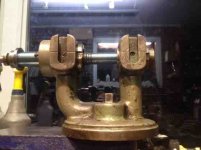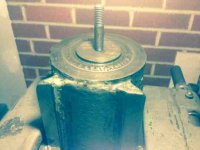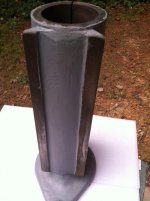becomingguru
Plastic
- Joined
- Nov 6, 2014
- Location
- Pittsburgh
Greetings all. Not sure how interesting any particular project of mine might be to others, but thought I'd offer my other current project, a LeBlond grinder. I picked this up last winter and spent the next several months scraping the ways, spent some time figuring out how to get a motor to power a headstock which was previously belt driven from the ceiling, and am now turning my attention to scraping the headstock. I would like to get a unified lubrication system on it at some point (it currently has a bunch of holes with caps for oil), and I haven't put any flaking on the ways yet, but it's not a high-use item, so we'll see.
Here are two pictures of the tool from straight-on and at angle. Headstock is on the bench, and conspicuously missing from the top of the column. That's the spindle held between those centers. Didn't really want to set it on anything after getting it back from having it ground

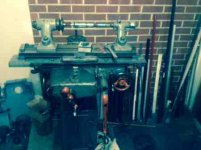
Here are a few pictures of the bearings inside the headstock. I'm two or three cycles into scraping the bearings. The split in the bearing is up.
Here's the smaller bearing at about 0.8" diameter and maybe 2" length.
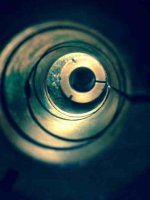
And two of the larger bearing, at 1.08" diameter and maybe 2" length.


Here are two pictures of the tool from straight-on and at angle. Headstock is on the bench, and conspicuously missing from the top of the column. That's the spindle held between those centers. Didn't really want to set it on anything after getting it back from having it ground



Here are a few pictures of the bearings inside the headstock. I'm two or three cycles into scraping the bearings. The split in the bearing is up.
Here's the smaller bearing at about 0.8" diameter and maybe 2" length.

And two of the larger bearing, at 1.08" diameter and maybe 2" length.


Last edited:


